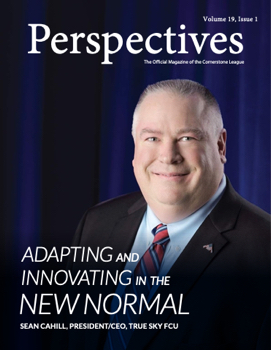

Research: Expectations and concerns drive borrower behaviors
Read time: 3 mins, 26 secs
Erika Romenesko, Strategy Manager, Lending Member Experience, TruStage
 Money matters are top of mind for a lot of people today. Clickable economic headlines, charismatic financial influencers, and the rising costs of nearly everything are contributing to consumers’ increased financial anxiety.
Money matters are top of mind for a lot of people today. Clickable economic headlines, charismatic financial influencers, and the rising costs of nearly everything are contributing to consumers’ increased financial anxiety.
Worry often sparks action. Indeed, new research from TruStageTM indicates consumers are taking financial steps that address their unique expectations and concerns. Interestingly, these steps appear to differ based on several nuances of the borrower journey, including the type of loan borrowers are considering.
Twists and turns along the borrower journey
It’s perhaps no surprise that today’s borrowers expect to research and apply for loans when and where they want, which for many is online. However, TruStage researchers found that the type of loan a borrower is pursuing can change where they turn for answers.
The more complex a loan, the more borrowers appear to seek out human vs. digital sources. When comparing recent auto, personal and home equity borrower experiences, TruStage observed that borrowers who had recently obtained a personal loan were more likely to use an online search engine to research their options. Those who had recently obtained a home equity loan, on the other hand, were more likely to ask friends and family about their options.
As they move from planning to actively seeking a loan, borrowers appear to take different actions than originally planned. TruStage uncovered this finding by comparing the action steps of consumers who plan their loans for multiple weeks to those who had recently borrowed. For instance, 38% of survey respondents who were planning to apply for a loan expected to use a website to compare different loan options, such as rates, fees, and term length. Yet just 22% of those who had recently applied for a loan reported actually using a website to track down this information.
The research uncovered similar disparities in how borrowers expected they would engage with lenders as compared to how they actually did. Among those planning for a home equity loan, 44% expected to contact their financial institution via phone. Among those who recently obtained a loan, though, just 29% said they’d used the phone.
The speed and convenience of financing at the dealership continues to drive the difference between consumer intent and actual behaviors. While 62% of individuals looking for a new auto loan planned to secure their loans from their trusted credit union or bank, only 41% who recently obtained their auto loan did so from a financial institution.
Planning for financial obligations in good times and in bad
Underlying the functional decisions of how to research and apply for a loan are more holistic considerations. This includes concerns about the loan itself, such as whether a monthly payment or interest rate will meet their expectations. Borrowers also face more emotional considerations, like being able to consistently afford and make a monthly payment, in good times and in bad.
When TruStage asked consumers about their top concerns across loan and repayment categories, several insights came forward. For starters, the monthly payment was the most or second-most important loan concern of more than half of survey respondents. In terms of repayment concerns, 8 in 10 consumers have one or more concerns about their ability to make their loan payments, with unexpected expenses that come up being the highest concern.
Here again, there are differences in the worries expressed by borrowers based on the type of loan they are considering. For example, whereas 22% of personal loan borrowers in the TruStage survey had concerns about potential financial difficulties, just 9% of auto loan borrowers said the same. This makes a lot of sense in context with what borrowers told TruStage researchers about previous financial problems. Nearly 20% of personal loan borrowers said they have missed a payment previously; a mere 4% of auto loan borrowers said the same.
Interestingly, borrower concerns appear to serve as a motivator for certain kinds of financial decisions. For example, despite variations in member preferences across different loan types, interest in payment protection solutions remains consistently high. Specifically, 64% are likely to consider payment protection for auto loans, 67% for personal loans, and 65% for home equity loans. This is a highly actionable insight for all lenders who have the opportunity to provide debt protection solutions to assuage member worry.
Borrower sentiment supports relationship-based growth strategy
For credit unions that hope to gain trust through fiduciary relationships and member-centered experiences, it’s critical to understand as much as they can about how personal financial decisions are motivated and made. Research into consumer sentiment serves a meaningful purpose for our industry, which continues to grow thanks to its commitment to meeting people where they are, not where we expect them to be. Borrower insights are particularly important for credit unions lenders today when money anxieties can either freeze a member with fear or motivate them to action.
To learn more about borrower expectations and concerns, credit unions may download the 2023 TruStage Lending Consumer Preferences Survey.
All data in this report is sourced from the 2023 Consumer Lending Preferences Research, conducted by TruStage in partnership with Epsilon, 2023.
________________________
TruStage is a preferred business partner of Cornerstone Resources, a wholly owned subsidiary of Cornerstone League.
Subscribe
Sign up to the receive the weekly Leaguer email. Existing subscribers can manage their subscription.

